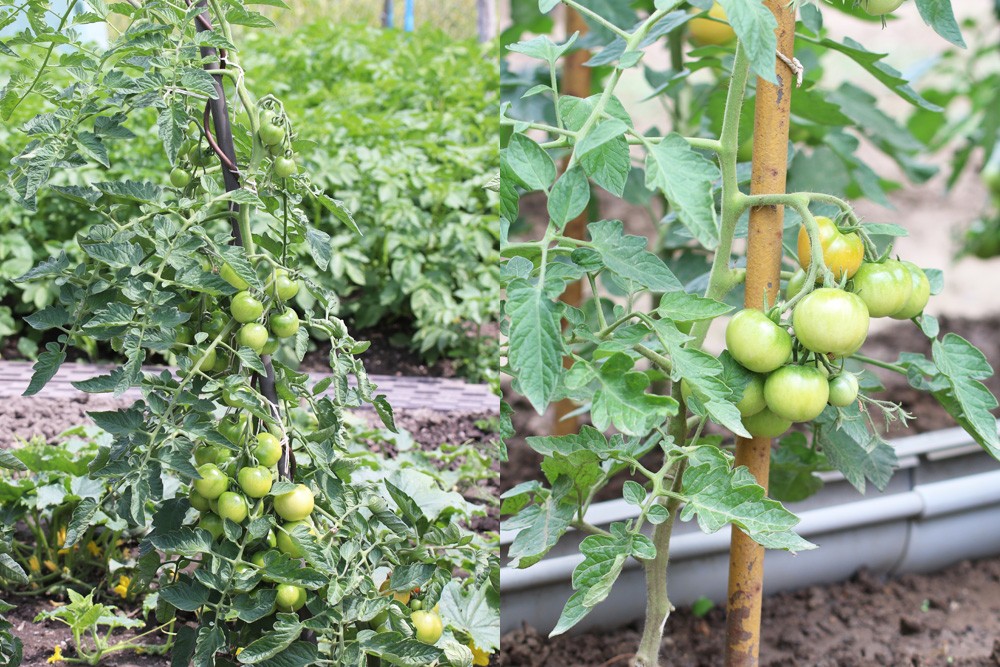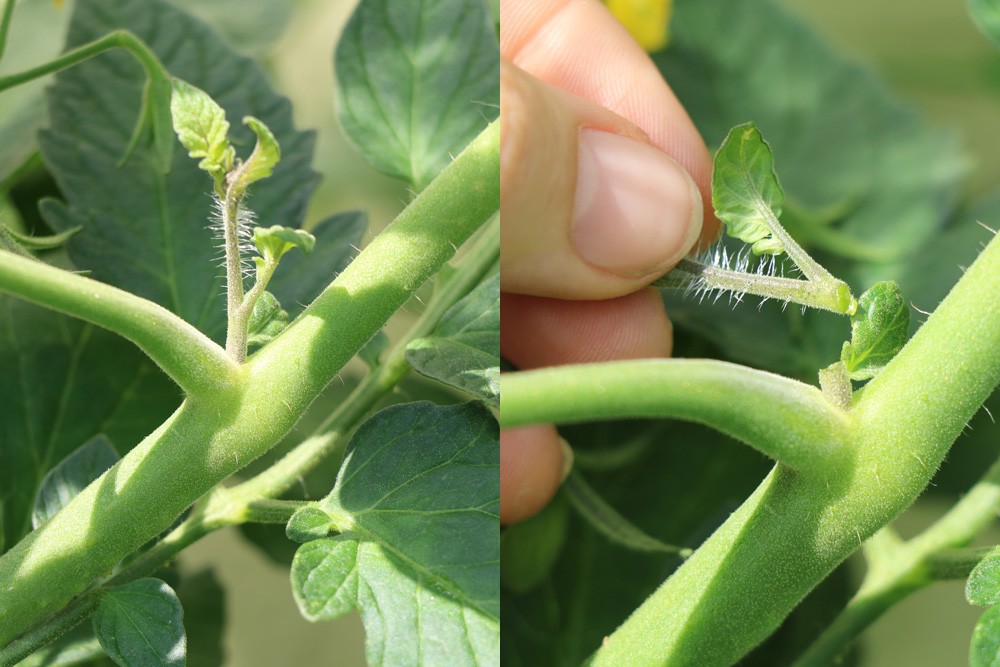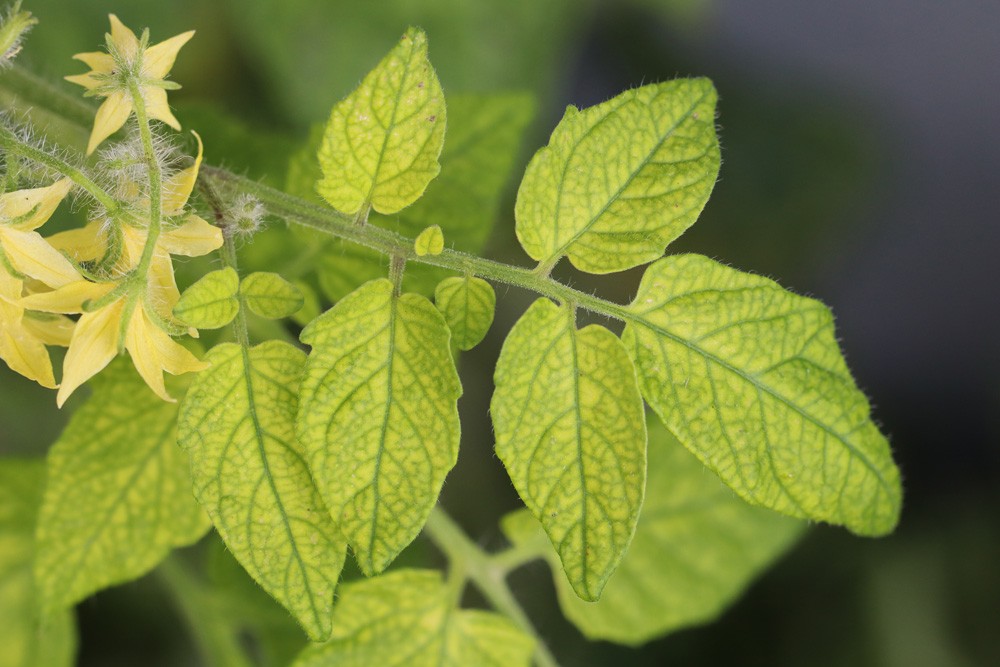Tomatoes prefer a location that is as sunny as possible, but too much sun can cause heat damage. Read here everything you need to know about sunburn on tomatoes!
Tomatoes thrive best in a sunny spot, but they need sufficient protection from the heat, especially in the early days. This is because the young plants are still extremely sensitive and can rarely cope with direct sunlight. However, even older plants are not always protected from sunburn, because care errors in particular can cause heat damage to tomatoes.
Contents
Causes of sunburn
Tomatoes love the sun, but they must first be accustomed to direct sunlight. Therefore, it is advisable to always gently harden off young plants, thereby familiarizing them with outdoor conditions. In addition, the roots of the young plants are not yet sufficiently developed to accumulate enough water. However, the tomato plants need the water to counteract the heat, otherwise they will get sunburn:
- Radiation destroys the leaf green
- Protein in the cells is destroyed
- tissue becomes soft
- top layer of cells dries out
Note: Fruits can also suffer sunburn once the fruit temperature rises above 35 degrees. If the fruit is still growing, this could cause it to burst open.
Symptoms of sunburn

Regardless of the age of tomatoes, sunburn is usually first noticeable on the leaves. However, sun damage can also spread to the stems and even the fruit. Sunburn on tomatoes can usually be identified by the following characteristics:
- light to white spots
- Leaves are dry like paper
- fruits have glassy areas at first
- then also turn whitish
- circular, shallow cracks
- fruits may burst open
Note: The fruits of cocktail tomatoes in particular, as well as tomato varieties with thin skin, are considered to be especially at risk.
Sunburn on tomatoes – what to do?
If sunburn becomes noticeable on tomato plants, this is initially no reason to panic immediately! Because tomatoes are generally very robust and usually recover from sun damage. However, this requires immediate action, because if the tomatoes continue to be exposed to direct sunlight, they may even die. Therefore, if tomatoes are sunburned, it is important to adequately protect them from the sun’s rays:
- Shade the plant
- water sufficiently
- leave affected leaves on for the time being
- sometimes the leaves still recover
- leaves provide shade
Tip: If the leaves do not recover, they should be removed. Because the burned leaves only cost the plant unnecessary strength.
Prevent sunburn
Many tomato plants can be saved despite sunburn, but the plant needs a lot of strength to heal. However, this means that the tomatoes lack the energy for growth and fruit formation. It is therefore advisable to take preventive measures so that the plants do not suffer sunburn in the first place.
Hardening

Hardening off is an essential part of care, because this measure gently accustoms the plants to the sun. Here, the young plants are repeatedly placed outside for a short time from the end of April to the end of May. However, there are also some things to consider here:
- half-shady location
- protected from rain and wind
- avoid direct sun at the beginning
- place in the sun only after a few days
Shade
Especially for young plants, it has proven useful to provide them with additional shade in the early stages. In the open field, for example, a sunshade or a mobile sun sail can be set up for this purpose. Plants cultivated in tubs can usually be placed in a shady location without any problems. In the case of tomatoes in the greenhouse, it should be noted that they are located behind glass and therefore need all the more shading:
- Paint shading paint on the glass
- paint the roof surface with lime paint
- Mount sun protection fleece
- Install shade netting
Pots
The choice of pots also affects the risk of sunburn, because they affect how quickly the substrate heats up. The warmer the soil, the more water the plant will need. However, if the plant does not have enough water available, it is at risk of sunburn.
- Plastic pots heat up particularly quickly
- give off the heat to the substrate and roots
- clay pots are better
- ideally use double-walled pots
- Earth does not heat up so quickly
Watering
Watering can also promote sunburn, especially if the plants are watered at midday. This is because the splashing water leaves small droplets of water on the plants, but these act as a kind of magnifying glass and provide additional heating. Therefore, it is advisable to always water the tomatoes as follows:
- water only in the morning or evening.
- water can evaporate until the midday sun
- do not water in strong sun
- always water from the bottom, directly on the roots
Tip: To limit the evaporation of water, it has proven useful to apply a layer of mulch. The advantage of this is that the mulch layer also protects against splashing water.
Pruning

Pruning promotes the formation of many, large fruits in the majority of tomato varieties and is therefore an indispensable care measure for many amateur gardeners. Because by removing stingy shoots, the plant has more power available for fruiting. However, if too many shoots and leaves are removed, the plant will lack natural sun protection. To avoid this, the following should always be taken into account when pruning:
- in sunny periods, do not prune too much
- above all, do not remove too many foliage leaves
- in case of doubt leave stingy shoots
- this leaves the fruit in the shade


